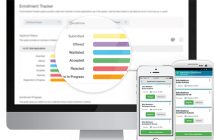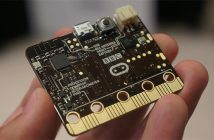
By Clayton Ostler, Senior Director of Technology, ContentWatch
In 2013, 89 percent of high school students had access to a mobile phone, laptop or tablet. That number dips slightly to 73 percent for middle school students, and even half of all children grades 2-5 have access to these devices.
Nationwide, 33 percent of all students have a school-issued mobile device, and with these huge changes come additional challenges for schools. Throughout the country, one-to-one initiatives and other programs are expanding rapidly, ensuring students have the technology at school and at home that is necessary for today’s integrated learning.
The classroom integration of mobile devices is increasing at a rapid pace, and it’s easy to see why. A recent study indicates that nearly 80 percent of teachers and administrators feel technology has had a positive impact on both the classroom and productivity of students. By adjusting her curriculum and integrating video lectures, a teacher in Maryland saw an increase from 3.59 to a 4.11 average out of a possible 5 on an AP calculus test. While student engagement and learning increases, schools must know how to protect students while still providing technology-fused education.
Schools have a responsibility to protect their students from the dangers that come from this proliferation of technology, particularly when students are using school owned or issued devices. These threats are constant, allowing students to be exposed to inappropriate content, dangerous and distracting software, and cyberbullies and predators. Protecting students and reducing liability for schools also ensures the proper working condition of devices and increases the focus of students who are using them.
Physical devices or network-wide software are typically used at schools to filter out unwanted content. While these devices are effective at protecting specific networks, today’s Wi-Fi and cellular networks can effectively render them useless. A student can easily skirt these “hardwired” protections by connecting to a Wi-Fi signal near the school, or even by activating a cellular hotspot on their phone to easily access content restricted by the school’s filter. Furthermore, this protection on a school network ends when the child goes home. Once away from that filter, students are typically left unprotected and free to use the device however they want.
The easiest solution for protecting devices is using software that is installed locally on individual devices. Top research firm Gartner recommends that security is best accomplished at the endpoint rather than at the server level. This ensures there is protection active at all times on the device.
Installing software on the device prevents students from circumventing protection measures even when they use a hotspot or connect to a different Wi-Fi network— it ensures the safety of the device anytime, anywhere. It allows students to continue accessing school curriculum and materials easily on the Internet while protecting the user and schools from inappropriate content, malicious software and other threats. This keeps students protected and focused on their schoolwork while using school-issued devices.
Schools can make use of other protections to make sure that students and teachers are secure. In my next article on one-to-one device programs, I’ll discuss more specifics on how schools can implement those protections.




